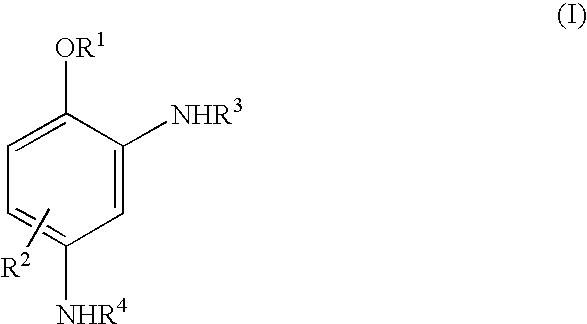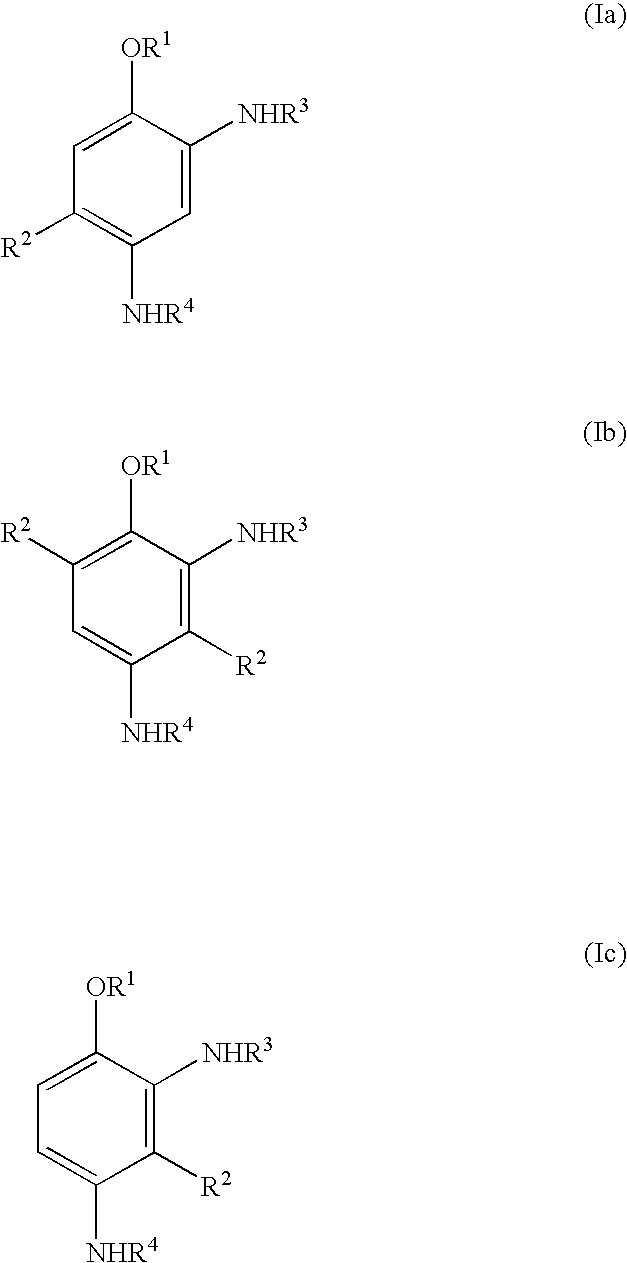Novel coupling components
a technology of coupling components and components, applied in the direction of dyeing process, hair cosmetics, organic chemistry, etc., can solve the problem of not being able to achieve a shade which looks natural on the hair, and achieve good to very good fastness properties and high color intensities
- Summary
- Abstract
- Description
- Claims
- Application Information
AI Technical Summary
Benefits of technology
Problems solved by technology
Method used
Image
Examples
working examples
1 Syntheses
1.1 2,4-Bis[(2-hydroxyethyl)amino]-6-methylanisole
[0247]
1.1.1 2,4-Dinitro-6-methylanisole
[0248] 1 l of fuming nitric acid was initially introduced at 5-10° C., and 100 g of 2-methylanisole were added dropwise with stirring (about 45 min). The mixture was then after-stirred for 30 min and then poured onto ice. The precipitate was filtered off and washed with a large amount of water. The mother liquor was diluted with 2×500 ml of water and the precipitates were filtered off with suction. The combined precipitates were then washed until neutral with 2×400 ml of sodium carbonate solution and water and dried overnight under reduced pressure.
[0249] Yield: 107 g (62%)
[0250] Melting point: δ 66-68° C.
1.1.2 2,4-Diamino-6-methylanisole dihydrochloride
[0251] 105 g of 2,4-dinitro-6-methylanisole, 1.35 l of ethanol, 150 ml of water and 1 g of Pd / C (5% strength) were initially introduced into the autoclave and hydrogenated at 50° C. with a hydrogen pressure of 50 bar for 12 h. ...
PUM
| Property | Measurement | Unit |
|---|---|---|
| temperatures | aaaaa | aaaaa |
| temperatures | aaaaa | aaaaa |
| hydrogen pressure | aaaaa | aaaaa |
Abstract
Description
Claims
Application Information
 Login to View More
Login to View More - R&D
- Intellectual Property
- Life Sciences
- Materials
- Tech Scout
- Unparalleled Data Quality
- Higher Quality Content
- 60% Fewer Hallucinations
Browse by: Latest US Patents, China's latest patents, Technical Efficacy Thesaurus, Application Domain, Technology Topic, Popular Technical Reports.
© 2025 PatSnap. All rights reserved.Legal|Privacy policy|Modern Slavery Act Transparency Statement|Sitemap|About US| Contact US: help@patsnap.com



